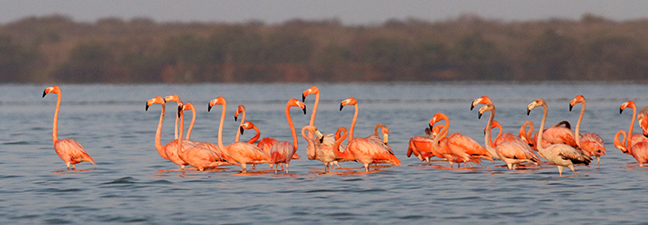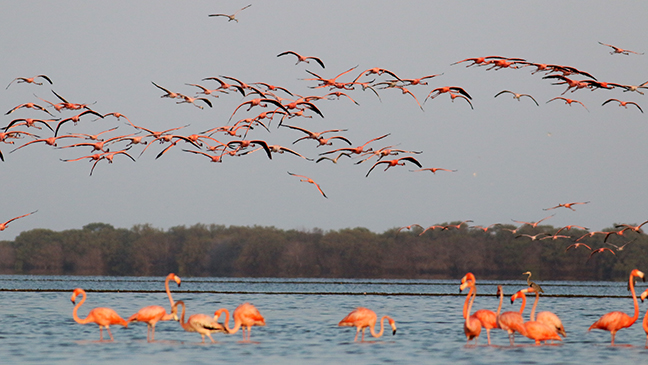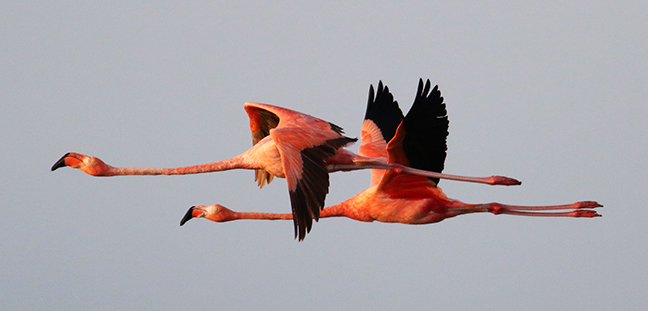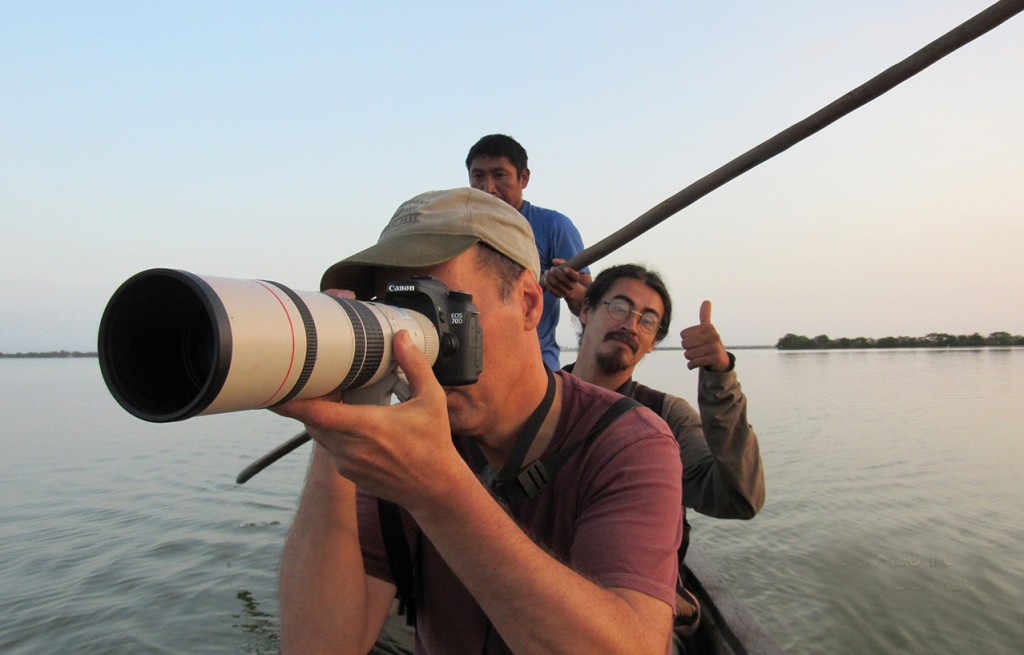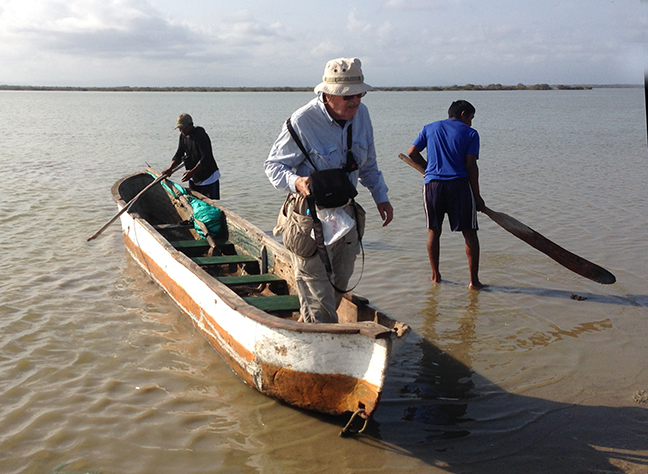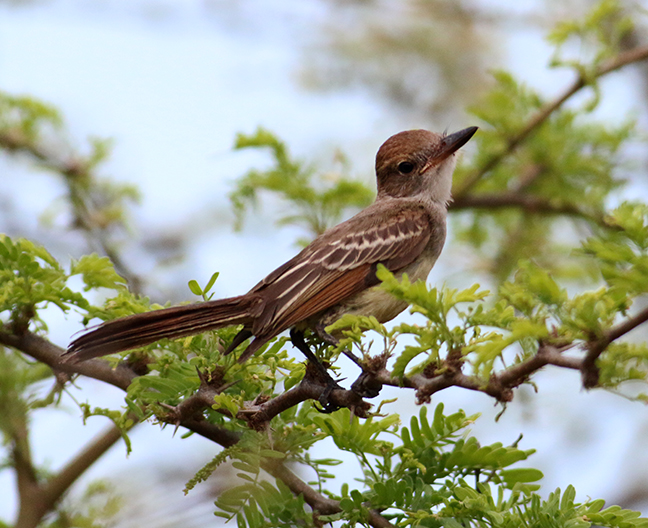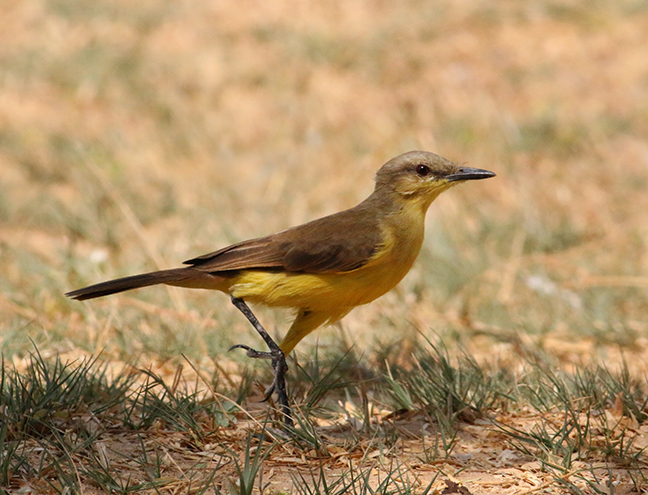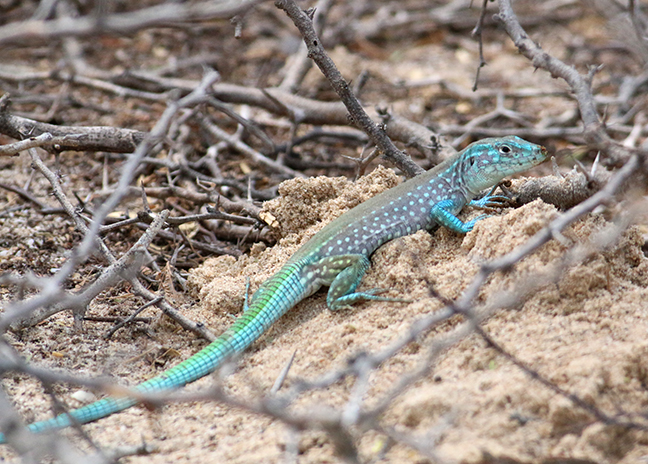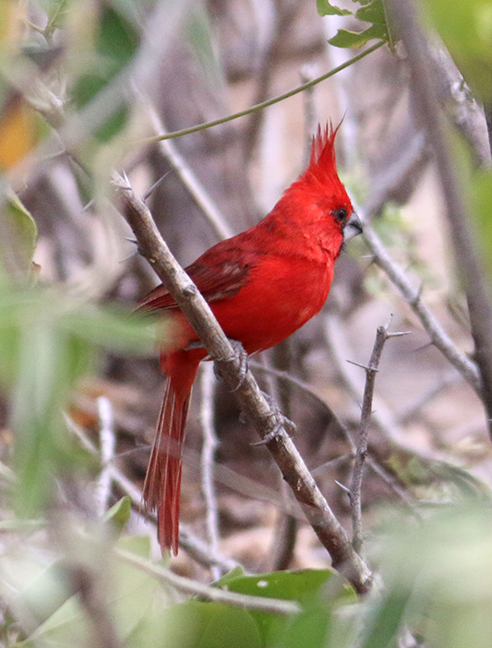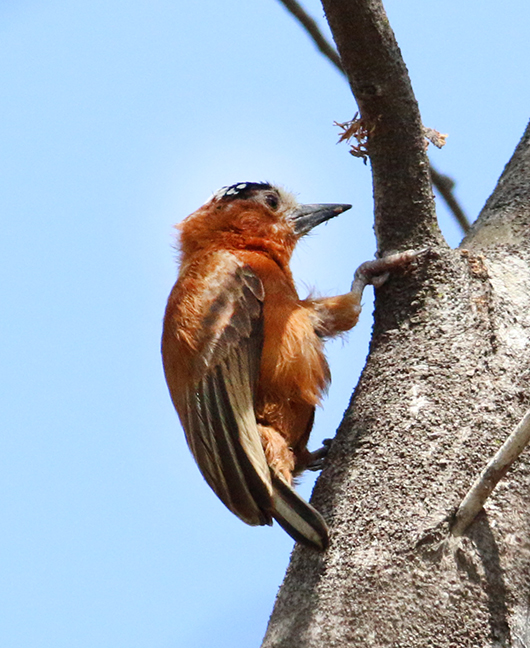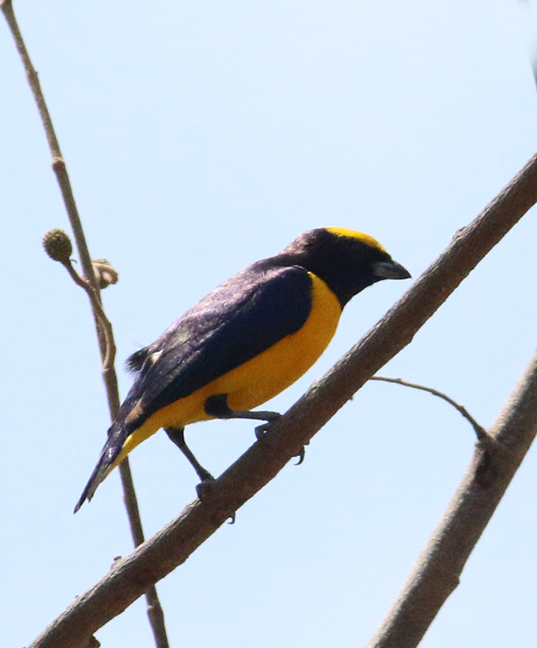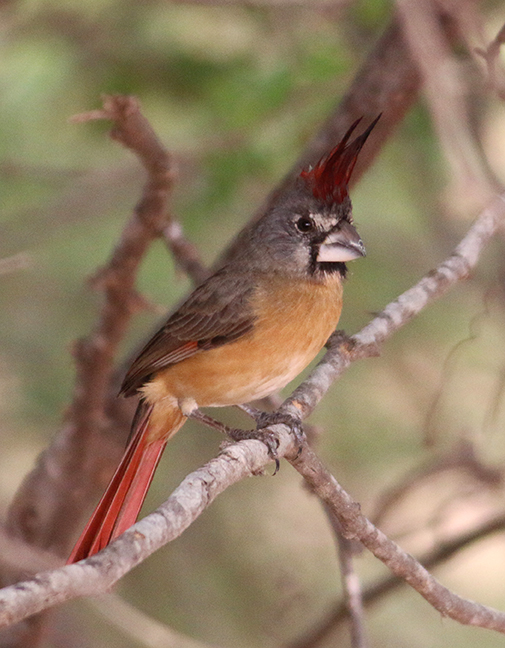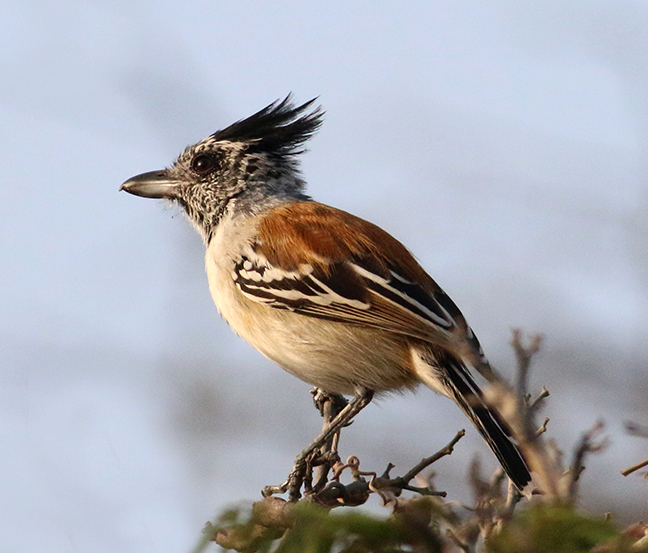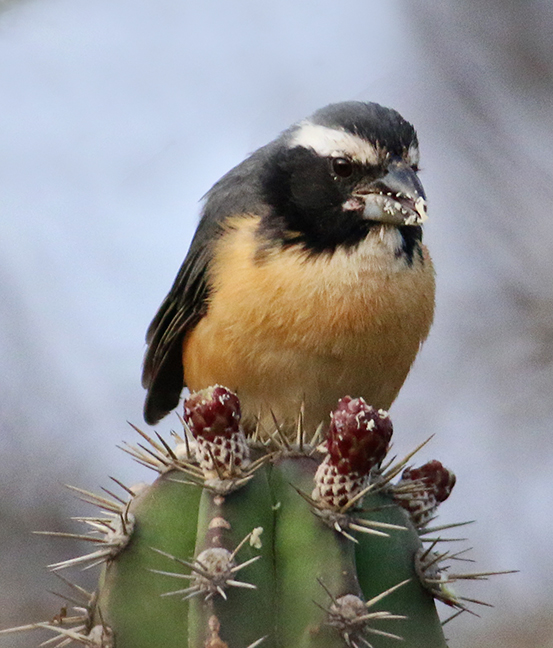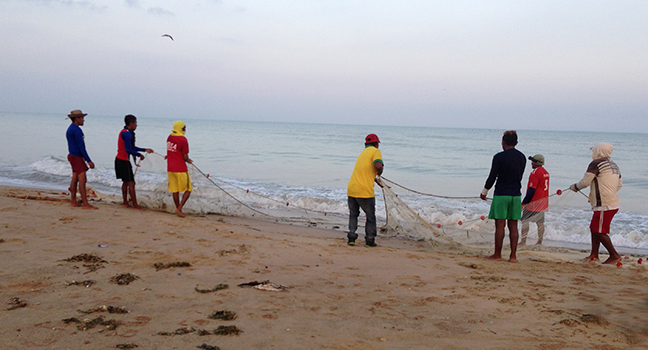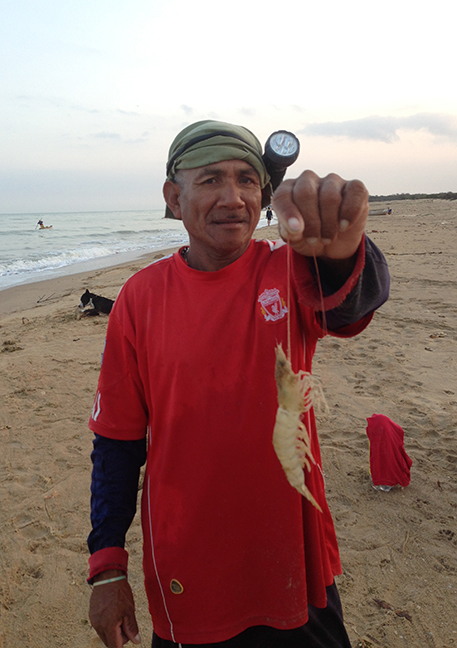It was probably a three-or-four hour drive from Minca to our next major stop at the village of Boca del Camarones, which is located at the junction of the Atlantic Ocean and the Santuario de Los Flamencos in eastern Colombia. This area is very hot and very dry, with dry scrub and cactus dominating the landscape. Because we arrived here at the beginning of February, which is well into the dry season, the dryness was exaggerated, with extensive obviously parched shorelines. In comparison to the cloud forest where we have spent most of this trip, this is completely different habitat, with an accompanying collection of new target species. We arrive in late afternoon, and as we leave Route 90 and its truck traffic behind and head down the local dirt roads, our first stop at a bridge starts turning up new species already, with Bare-eyed Pigeons in the treetops and a covey of Crested Bobwhite scampering into the brush. We drive through the dirtiest village that I’ve encountered, Camarones, with plastic and trash scattered everywhere, but thankfully continue onward and reach our destination for the next two nights, the Remanso del Santuario, just a few hundred yards from the Atlantic Ocean. Remanso is small, with two rooms in a cabina to house visitors.
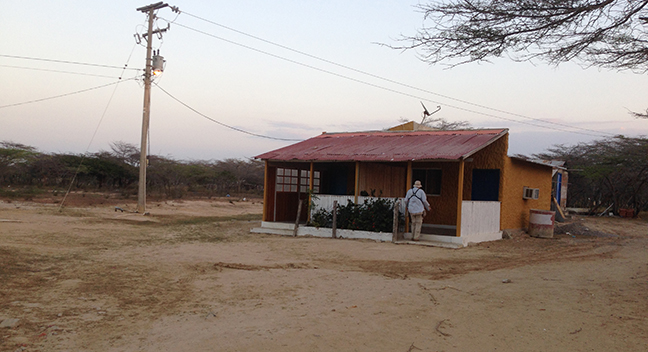
Our cabina for two nights at El Remanso del Santuario. It’s not exactly the Hilton, but it’s as true for birding as it is for real estate; the most important things are location, location, and location.
The much-anticipated highlight of this entire trip for me was the hope of seeing wild American Flamingoes for the first time. I was anticipating maybe seeing a dozen or two if we were lucky, but we did much better than that. One morning we met a local native, Saleem, who along with a partner poled us in their dugout canoe to a distant location within the sanctuary where some of the Flamingoes were congregated. We found a group of perhaps 100 or so and gradually moved closer. Two other large flocks were visible in the distance, but too far to travel there. Remarkably, part of one of those flocks decided to join the flock that we were watching, as we were treated to hundreds of Flamingoes flying past and around our boat. FAN-TAS-TIC!! Saleem estimated seeing 2,500 Flamingoes in the refuge the day before; on our trip I’d imagine that more than 1,000 were present. Scattered in between were occasional Scarlet Ibis and Roseate Spoonbills, along with more familiar herons and egrets. What a great morning. And isn’t it nice to exceed your expectations?
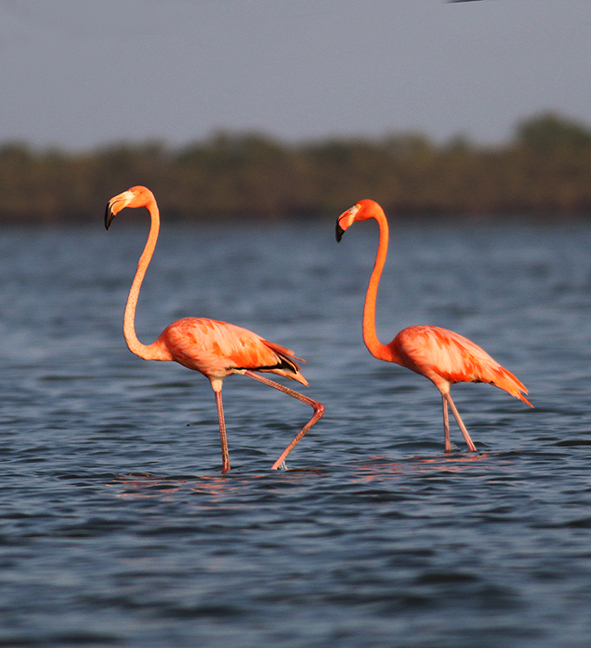
Somehow they just didn’t seem real. ..the combination of bright color, neck length, overall size, and that bizarre bill shape.
After breakfast we set out in search of some of the land birds of the region. And such a nice group of species they were: Green-rumped Parrotlets, Scaled Doves, Slender-billed Inezia, Yellow Orioles, Cattle Tyrants, Vermillion Flycatchers, and Carib Grackles all were in trees adjacent to the dining area. A short drive away we roamed through the brush, finding multiple Orinocan Saltators and Gray Saltators, Vermillion Cardinals with their exaggerated crests, White-whiskered Spinetails, Chestnut Piculets, Russet-throated Puffbirds, White-fringed Antwren, Pileated Finch, Black-crested Antshrike, Venezuelan Flycatcher, Northern Scrub-Flycatcher, and Pale-legged Hornero, among others.
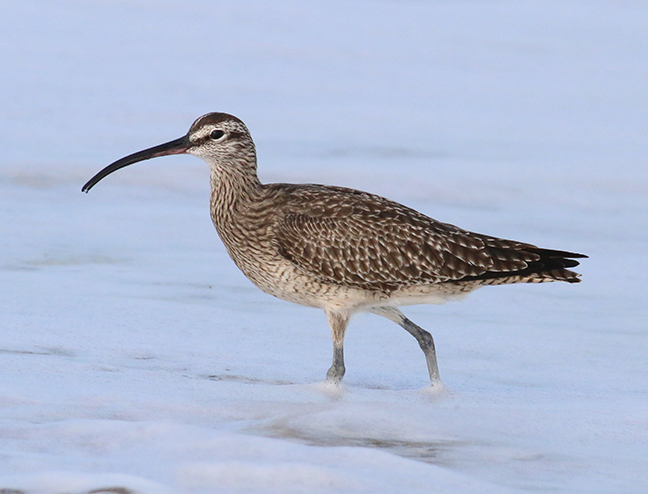
Sure, we see Whimbrels in New Jersey, but this one seemed to glow in the morning light and in the surf.
It was very nice having two days to spend here instead of rushing through in a single day the way most packaged trips to the region do. The lack of any frantic rushing allowed us to walk along the oceanfront one morning, where the locals were ending a night of fishing, dragging in their nets and bringing in some fresh fish and camarones.
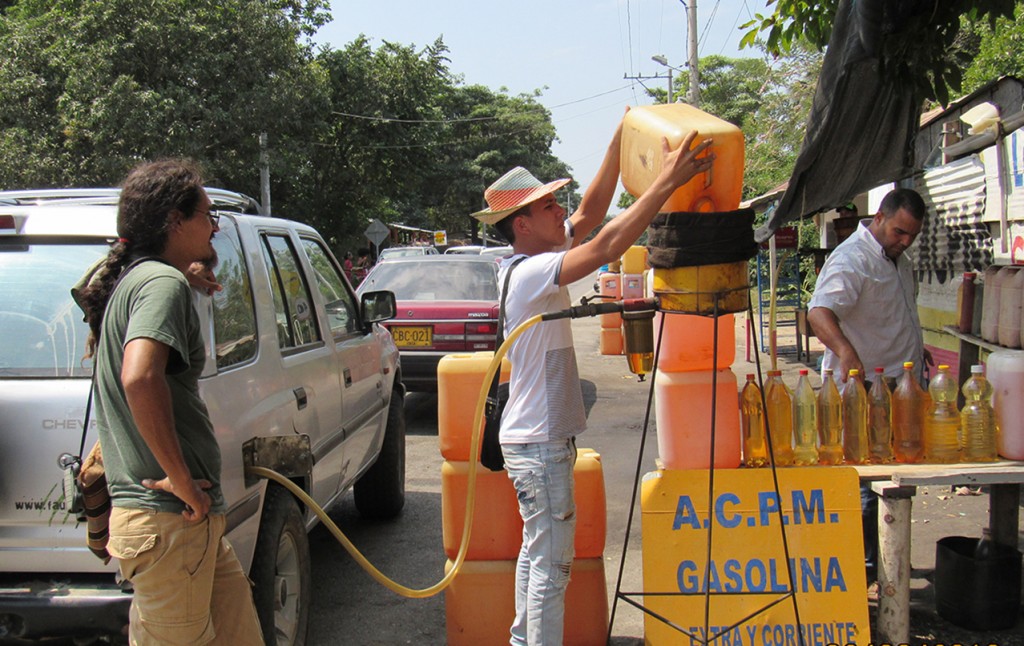
A Colombian ‘gas station’. In villages, they sell gas in plastic bottles or larger drums, then pour it into a container, where it fills the tank by gravity through a small rubber hose.
When we were leaving the region we passed by a small wet area that held White Ibis, Scarlet Ibis, and intermediate color forms. Sebastian described recent studies claiming that Scarlet Ibis is not a separate species, but a color variant of White Ibis. I’ll have to look into that, but it was interesting to see the three color variants side-by-side.
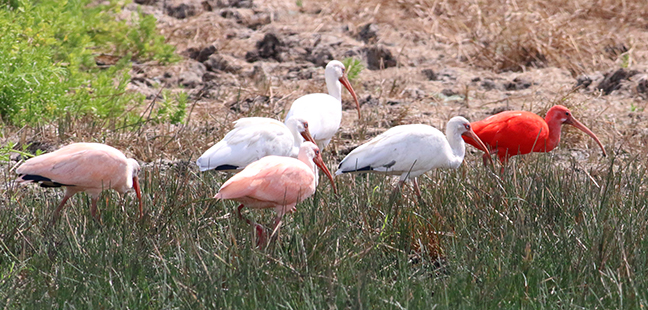
Scarlet Ibis, White Ibis, and….Pink Ibis??? Hybrids? Or just intermediate color morphs? I’ll have to do some reading.
One more Colombian blog: finishing up
